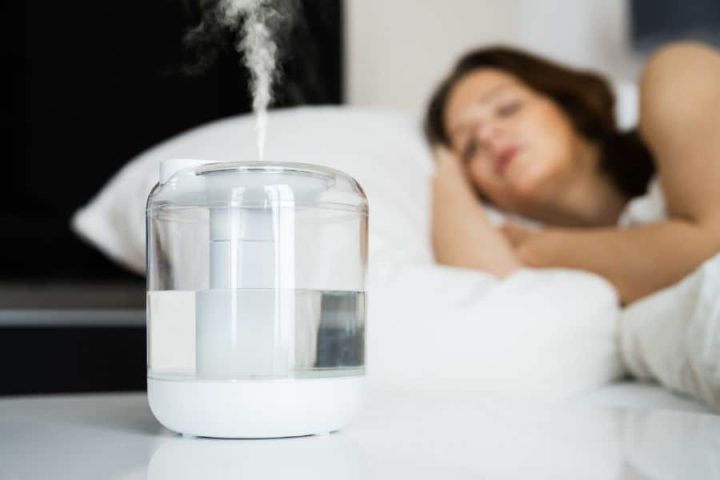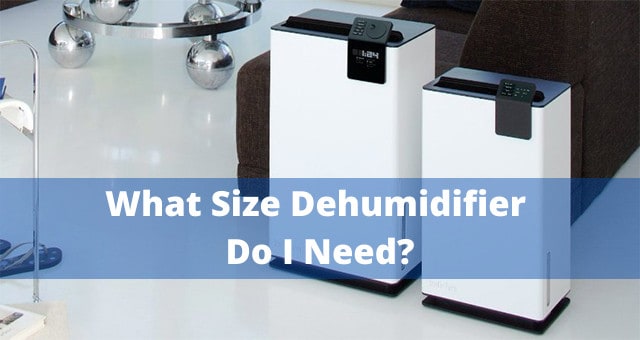The relative humidity level in your home should be between 30 to 50 percent, with the ideal level being about 45 percent. If the humidity in your home is below 30 percent, then your house’s air is dry. But if the humidity is above 50 percent, your home is in uncomfortable, muggy conditions.
Why too high or too low humidity in your home should be avoided? Read below.
Too High Humidity
If the humidity level is higher than 50 percent, then there is a great condition for mold and mildew to grow.
Molds produce irritating substances that can act as allergy-causing elements (allergens) in sensitive persons. Some molds create toxic substances known as mycotoxins, but mold is not dangerous or toxic. The mold may not generate any health impacts, or it may lead to symptoms in people who are sensitive to mold.
High moisture can increase common household allergy triggers like dust mites, mold spores, and airborne bacteria. Dust mites are harmful when breathed in since they irritate nasal passages and respiratory tracts.
Pests, for example, spiders, cockroaches, silverfish, and centipedes, love moist conditions.
Moisture damages your home, for example, support beams, buckling floorboards, hardwood floors, etc.
Too Low Humidity
Dry indoor air can lead to:
- Bloody nose
- Cracked lips
- Dry, scaly skin
- Dry sinus passages
- Sore, scratchy throat
- Aggravated respiratory ailments
Dry air can also affect your home’s furniture and interior. For example, dry conditions can wreak havoc on the wallpaper, causing it to peel at the edges.
Wood floors and furniture may lose moisture and contract, leading to ugly cracks, warps, and separations.
Besides, static electricity can increase, causing sudden and painful shocks and potential damage to electronic equipment.
What To Do If Humidity Is Too High Or Too Low?
Maintaining the right humidity level in your living or working space is important for comfort and health. If humidity is too high or too low, it can lead to various problems. Here’s what you can do to address both high and low humidity levels:
Too High Humidity:
- Use a Dehumidifier: A dehumidifier is designed to reduce excess moisture in the air. Place it in the affected area, such as a basement or a room with high humidity.
- Ventilation: Ensure good airflow in your home or room. Use exhaust fans in bathrooms and kitchens to remove excess moisture. Open windows and doors when the outside air is less humid.
- Use Air Conditioning: Running your air conditioner can help reduce indoor humidity, as it cools and dehumidifies the air.
Ductless Mini-Split Air Conditioner
- Fix Leaks: Address any water leaks or plumbing issues in your home, as these can contribute to high humidity.
- Houseplants: Some houseplants can help absorb excess moisture from the air. Placing a few in your home can be beneficial.
Too Low Humidity:
- Use a Humidifier: A humidifier adds moisture to the air. There are different types available, from small-room humidifiers to whole-house systems. Choose one that suits your needs.
Cool Mist Humidifier for Large Room
- Boil Water: Boiling a pot of water on the stove or using a kettle can introduce moisture into the air. Just be cautious not to let it boil dry.
- Open Water Containers: Place water containers near heat sources, like radiators or heaters. As the water evaporates, it will increase indoor humidity.
- Hang Wet Laundry: When drying clothes, consider hanging them indoors. The evaporating water will help raise humidity levels.
- Seal Gaps and Cracks: Properly seal any gaps and cracks in doors and windows to prevent dry outdoor air from entering your home.
- Use a Hygrometer: Invest in a Hygrometer to monitor humidity levels so you can adjust your efforts accordingly.
- Add Moisture to the Air: Using a spray bottle to mist the air with water can temporarily increase humidity in a small area.
- Avoid Overheating: Avoid setting your thermostat too high, as heating systems can dry out the air. Maintain a comfortable, but not excessively warm, temperature.
Remember to target the ideal indoor relative humidity level, typically around 30-50%.
Maintaining proper humidity is important for your health comfort, and for preserving your home and belongings.
Extreme humidity levels, whether too high or too low, can lead to health issues and damage to your property.










